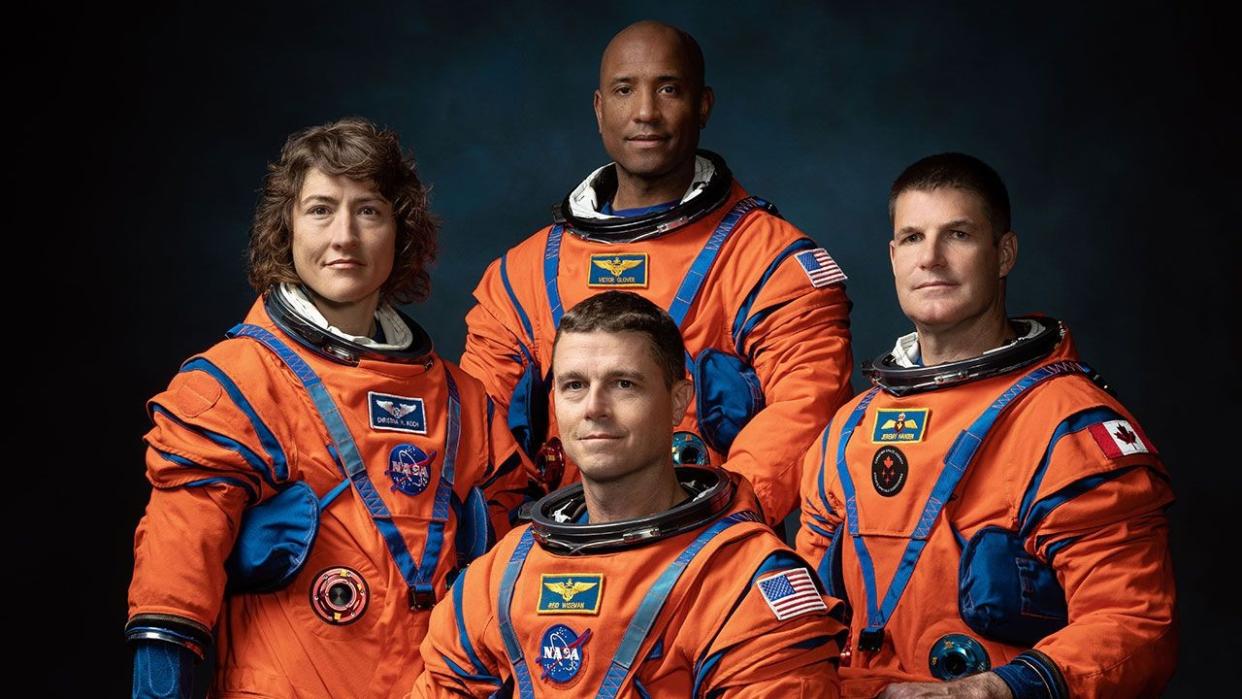Diversity will be key to Artemis moon-to-Mars push, NASA officials say

Getting astronauts back to the moon and then on to Mars will require fully tapping the United States' famed melting pot, NASA officials stress.
The agency is working to establish a human presence on and around the moon by the end of the 2020s via its Artemis program of lunar exploration. NASA believes that the lessons and skills learned through this effort will help it make the next giant leap — putting boots on Mars, which the agency aims to do by the late 2030s or early 2040s.
Artemis is therefore a very different program than Apollo, which took more of a flags-and-footprints approach to lunar exploration. Artemis astronauts will also look very different than the Apollo flyers, as we learned earlier this month with the unveiling of the Artemis 2 crew.
Related: Everything you need to know about NASA's Artemis program
The four-person Artemis 2 mission includes a woman (NASA astronaut Christina Hammock Koch), a Black man (NASA's Victor Glover) and a Canadian (Jeremy Hansen), along with NASA's Reid Wiseman, who fits the Apollo mold (white, male and American).
This diversity is partially a reflection of social advances the United States has made since the 1960s and early '70s (though we certainly have a lot further to go). But it's also an informed decision to get the most out of Artemis 2, as well as the missions that follow, according to NASA officials.
"I hope that when the young people out there today see the Artemis 2 crew, they can see themselves," Ken Bowersox, deputy associate administrator for NASA's Space Operations Mission Directorate, said during a panel discussion on Wednesday (April 19) at the 38th Space Symposium in Colorado Springs.
"Back when I was young, I saw the Apollo astronauts, and I could see myself on one of those missions," he added. "The Artemis 2 crew should give us an even broader group of folks that can identify that way. And I hope they'll realize that there's a place for them in what we're doing. Going to the moon, going to Mars, will take everybody in our society to participate and support, and I hope everybody saw that when we named that crew."
Nicola Fox, the associate administrator of NASA's Science Mission Directorate, voiced similar sentiments.
"I also think it's really important that we build an environment that is inclusive," Fox said during Wednesday's panel discussion.
"For sure, the best teams are the diverse teams," she added, noting that, if everyone "looks and thinks the same, you'll get the same" results.
"As we're doing these really daring, first-of-a-kind, pushing-the-boundaries [missions], we need to have the best and brightest minds," Fox said. "And so, making sure that we have an environment where everybody feels that they see themselves in our teams, I think, is just really, really important. And I want to see us really leaning in and doing a lot more of that moving forward."
Related stories:
— NASA's Artemis 2 moon mission: Everything you need to know
— The 10 greatest images from NASA's Artemis 1 moon mission
— NASA aims to boost diversity at space agency with 2 high-ranking positions
Artemis 2 is scheduled to launch its four crewmembers around the moon in November 2024. The next mission in the program, Artemis 3, will land astronauts near the lunar south pole, a region rich in water ice where NASA wants to set up one or more research outposts. NASA aims to launch Artemis 3 in 2025 or 2026, agency officials have said.
On Tuesday (April 18), NASA released an "architecture concept review" of its broad moon-to-Mars plan. You can find this technical document, and other related resources, at this NASA site.
Mike Wall is the author of "Out There" (Grand Central Publishing, 2018; illustrated by Karl Tate), a book about the search for alien life. Follow him on Twitter @michaeldwall. Follow us @Spacedotcom, Facebook and Instagram.

